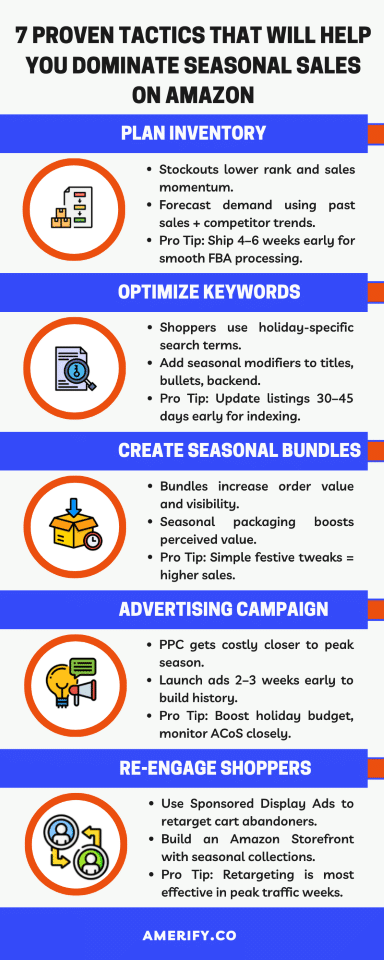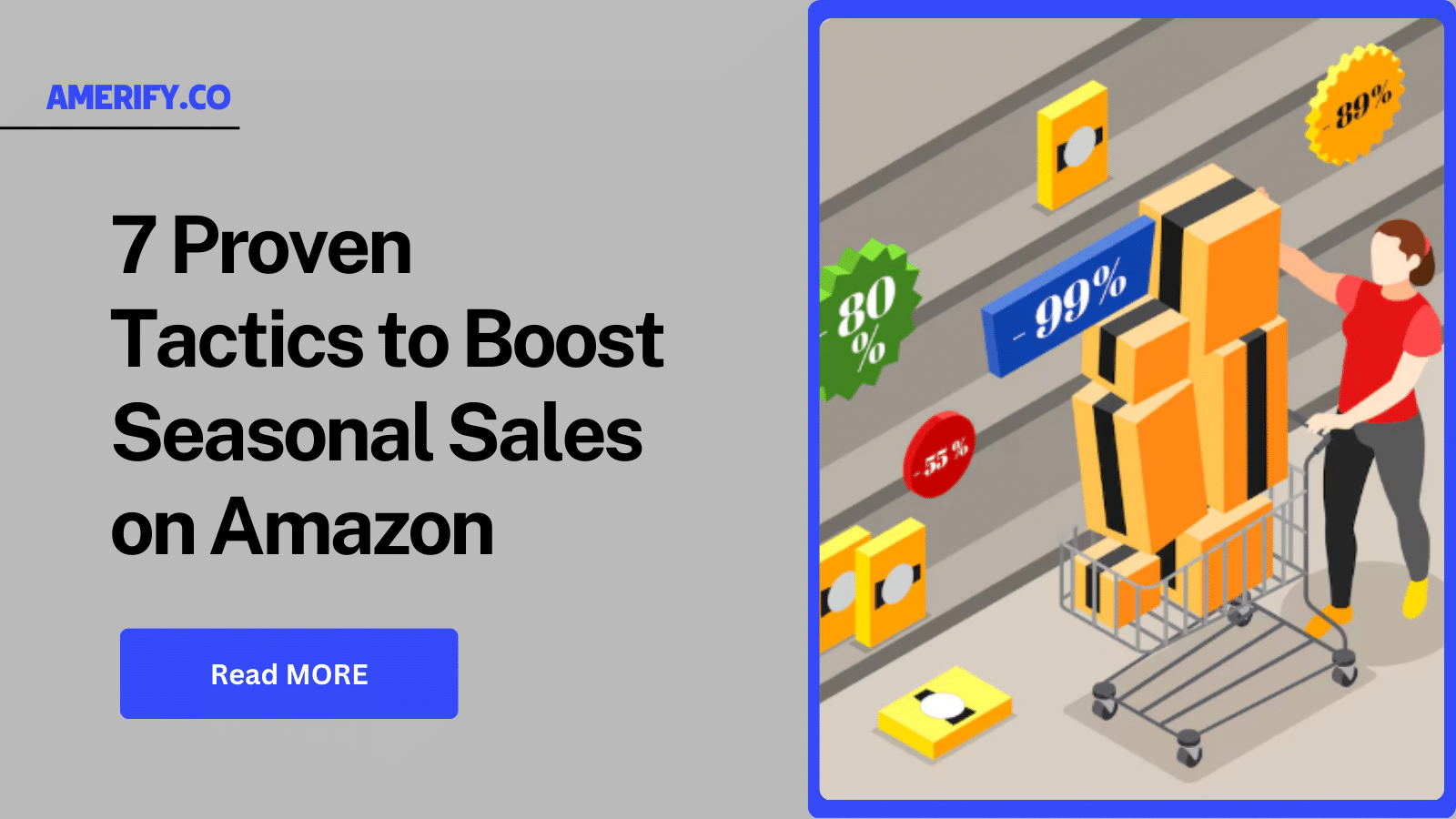Key Takeaways:
- Seasonality creates huge opportunities optimizing early ensures your listings capture peak traffic and conversions.
- Data-driven preparation beats guesswork smart inventory planning, keyword targeting, and promotions maximize ROI.
- Success is repeatable sellers who build structured seasonal playbooks consistently outperform their competitors year after year.
Why Seasonal Sales Matter on Amazon?
Amazon isn’t just an online marketplace — it’s the go-to shopping destination during seasonal peaks like Black Friday, Cyber Monday, Prime Day, and holidays (Christmas, Valentine’s Day, Mother’s Day, Back-to-School).
For sellers, this means:
- Traffic surges massively — millions of shoppers are ready to buy.
- Competition spikes — brands fight for visibility and price dominance.
- Small optimizations = huge payoffs — even a 1–2% lift in conversion rates can mean thousands in extra sales.
Now let’s dive into the 7 proven tactics that will help you dominate seasonal sales on Amazon.

1. Plan Inventory Ahead of Time
Nothing kills seasonal momentum faster than going out of stock. Amazon penalizes stockouts by lowering your organic rank and cutting sales velocity.
What to Do?
- Forecast demand based on previous seasonal sales and competitor trends.
- Factor in longer shipping lead times (especially during Q4 when carriers are overloaded).
- Use Amazon’s Inventory Performance Index (IPI) to monitor health and avoid storage restrictions.
Pro Tip: Ship inventory 4–6 weeks before the season starts to ensure FBA processing doesn’t delay your launch.
Choose amerify and experience the difference our experts can make.
2. Optimize Keywords for Seasonal Shoppers
Consumer search behavior changes during peak seasons. Shoppers don’t just search for “coffee mugs” — they search for “Christmas gift coffee mugs” or “Valentine’s Day his and her mugs.”
What to Do?
- Use keyword tools to find seasonal search terms.
- Update titles, bullets, and backend fields with holiday-related modifiers.
- Don’t stuff — balance evergreen keywords with seasonal terms for sustained ranking.
Pro Tip: Start updating listings 30–45 days before the season so Amazon’s algorithm has time to index the changes.
3. Create Seasonal Bundles & Variations
Bundles increase average order value and stand out against single-product listings.
Examples:
- “Holiday Gift Set” (coffee mug + hot chocolate + gift bag).
- “Valentine’s Bundle” (2-pack of candles with themed packaging).
Pro Tip: Seasonal packaging (colors, labels, holiday-friendly copy) boosts perceived value without drastically increasing costs.
4. Run Amazon Advertising Campaigns Early
PPC gets more competitive (and expensive) during peak shopping periods. The earlier you launch, the cheaper your clicks will be.
What to Do?
- Start building ad history 2–3 weeks before peak dates. Amazon rewards campaigns with strong relevance.
- Run Sponsored Products + Sponsored Brands to capture both bottom- and top-funnel traffic.
- Test seasonal keywords in PPC to see which ones convert before fully updating listings.
Pro Tip: Allocate a bigger ad budget during holiday weeks — but monitor ACoS closely to avoid overspending.
5. Leverage Amazon Deals & Coupons
Shoppers expect discounts during seasonal peaks. Amazon promotes products with deals more aggressively in search results.
Options:
- Lightning Deals for Prime Day or Black Friday.
- Coupons with clear callouts (green badge = higher click-through).
- Prime Exclusive Discounts for members.
Pro Tip: Submit deals well in advance — Amazon often requires approval weeks before big sales events.
6. Enhance Listings with A+ Content & Images
Visuals and enhanced content win attention in crowded seasonal categories.
What to Do?
- Refresh product images with seasonal context (gift wrapping, holiday décor, lifestyle shots).
- Use A+ Content to highlight seasonal benefits (e.g., “Perfect stocking stuffer” or “Ideal Mother’s Day gift”).
- Add comparison charts to cross-sell your bundles or related products.
Pro Tip: Even small seasonal tweaks (a banner, festive background, or gift-giving callout) can dramatically increase conversions.
7. Retarget and Re-Engage Shoppers
Shoppers browse a lot before buying during seasonal peaks. Retargeting keeps your product top of mind.
What to Do?
- Use Sponsored Display Ads to retarget cart abandoners or recent viewers.
- Build an Amazon Storefront with seasonal collections (e.g., “Holiday Gift Ideas” section).
- If Brand Registered, use Amazon Posts to push seasonal themes.
Pro Tip: Retargeting works best in high-traffic weeks when shoppers are undecided and comparing options.
Final Thoughts
Boosting seasonal sales on Amazon isn’t about one magic trick — it’s about strategic preparation and execution. Sellers who plan inventory early, target seasonal keywords, run ads smartly, and tailor their offers to holiday shoppers consistently outperform competitors.
Think of each season as a chance to build momentum — not just for one event but for long-term ranking and repeat customers.



